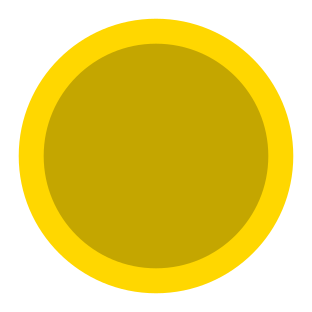How can we connect up the cyan and magenta paths?
Hmm — looks like we’ve blocked off the magenta paths.
This is where the crossing  comes in:
comes in:
The crossing swaps the position of the two paths. This lets our circuits cross each other without interfering.
If you’re following along with a review kit, you might find this piece a bit tricky. It’s actually our most recently developed roon — previously, a crossing  was much larger, and also handed, which made it pretty inconvenient. We’re still tweaking this new version, so if you’re having trouble:
was much larger, and also handed, which made it pretty inconvenient. We’re still tweaking this new version, so if you’re having trouble:
- Make sure to turn the handle slowly and very steadily — no sudden jumps!
- Make sure the drive is on a flat surface
- Try creating the “slalom” design below for practice:
If you’re still having trouble, check out review kit troubleshooting. We’re still working on making this roon a bit easier to use in the full release.
fungibility
You might have noticed that when the crossing  receives
receives 
 , it doesn’t actually swap them — they go straight through.
, it doesn’t actually swap them — they go straight through.
This is fine, because marbles are identical. Swapping two identical marbles is the same as not swapping them at all.
This property is called fungibility. Think of it like a bank account. If you deposit $1, then transfer someone $1, it’s meaningless to think about whether it was the “same” dollar — all that matters is the final amount in each account.
When designing roons circuits, marbles are logically fungible, so we don’t worry about getting the “right” marble to its destination — any marble will do.
next
Now we have a few basic roons under our belt, and the word “fungible” no longer sounds like a real word, it’s time to start building some devices.
continue
